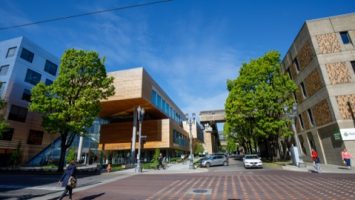
With the rapid growth in the city’s population, Brampton, Ontario experienced ridership growth that resulted in purchase of more buses to meet their service levels. They needed a system that would monitor and report on the health status of their fleet in real-time, so they can respond to and address issues proactively. From that, the Smart 50 Award winning project Automated Vehicle Monitoring (AVM) for Transit was born. Managing Editor Laura Benold had the opportunity to speak with Prem Balasubramanian, program manager with the city, about the project, how it all began, and what they learned along the way. Check it out!
LB: Of what resulting value are you most proud?
PB: This application enables Brampton to repair maintenance issues proactively, preventing mechanical breakdowns and reducing unexpected road calls which helps us maintain service reliability and improve our rider experience.
LB: You received funding from several levels of Canadian government to support the project. Can you share a bit more about that process?
PB: The initial phase of AVM Project was funded through our Züm Bus Rapid Transit Project. This project was jointly funded by the Government of Canada, Province of Ontario, and the City of Brampton (each donating one third of the total funding). The second and third phase of the AVM Project was funded through the Government of Canada’s Public Transit Infrastructure Fund and costs were shared equally between the federal government and the City of Brampton.
LB: What made this project a priority for the local community over other things that might require attention or funding?
PB: We began the proof of concept of AVM in 2014, and over the following 2.5 years, we were able to demonstrate a positive return on investment. Having a positive ROI elevated this project above other competing priorities.
LB: Who are the primary users of the application, and how do you take into consideration their level of experience, education, and on-the-job needs when creating it?
PB: the primary users of our AVM application are mechanics, foremen, and managers from the maintenance group. This application was made available at shop floor PCs allowing our mechanics to view information, issues, and charts. Training was provided to all mechanics and foremen to enable them to use this application effectively along with quick-reference of key reports of value to each group. Our mechanics are also able to access this application through WiFi when working at bus terminals and on key corridors where the city’s WiFi is available.
LB: What partners did you work with, and how did you select them?
PB: The prime vendor of this application and related on-board hardware is Clever Devices from Woodbury (New York), selected through a competitive bidding process. We worked closely with Clever Devices on difference phases of this project: system design, installation of hardware on our buses, testing, training, and deployment of the application. We also worked with Rogers Canada (our cellular service provider) to set-up an APN-based cellular-connectivity for real-time data exchange between the buses and our back-end AVM system.
LB: What did you learn along the way that you wish you knew at the beginning?
PB: The vendor would be advised to have their staff on-site to supervise vehicle installation and track parts and equipment being stored on-site and ensure that their proposal clearly defined the acceptance criteria.
LB: What does it mean to you to win a Smart 50 Award?
PB: The Smart 50 Award is a tribute to Brampton staff and vendors who worked tirelessly to deliver this project. It demonstrates our focus on Smart City solutions to shape, support and manage the diverse needs of our residents.


